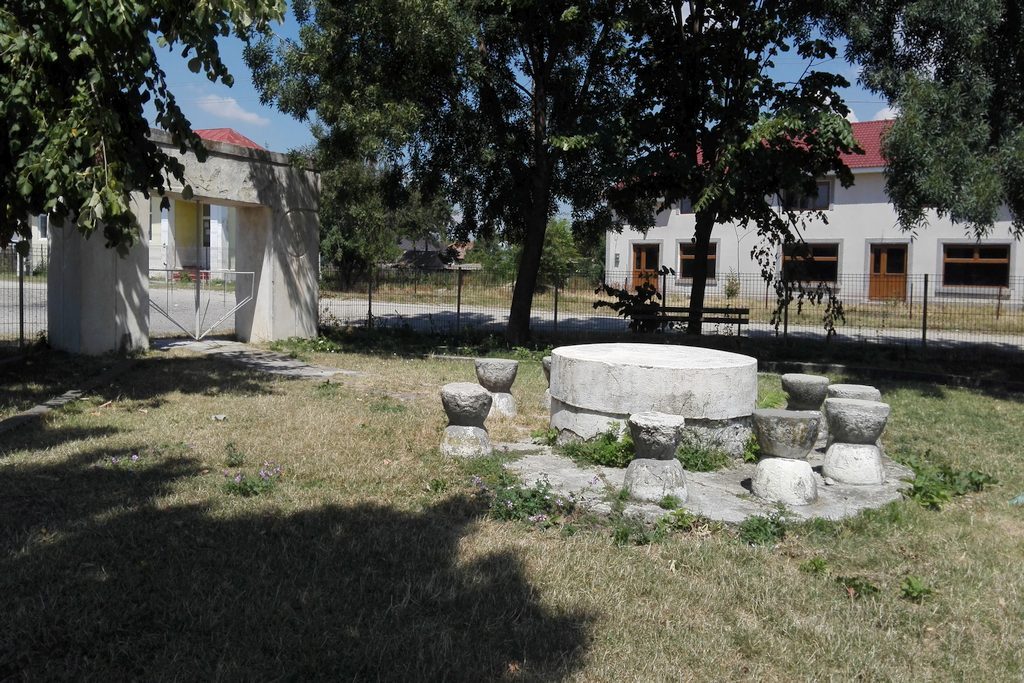

The park in the town of Frunzaru is dedicated to works of great Romanian sculptor Constantin Brâncuşi.
Constantin Brâncuşi was born on February 19th, 1876, in Hobiţa, Gorj, died on March 16th, 1957, in Paris.
It was a Romanian sculptor with overwhelming contributions to the renewal of the vision and language of arts in contemporary sculpture. Constantin Brâncuşi was posthumously elected member of the Romanian Academy.
Constantin Brâncuşi exhibited for the first time at the Société Nationale des Beaux-Arts and in Salon d’Automne in Paris in 1906.
Creates in 1907 the first version of of “The Kiss” theme that will continue in various forms until 1940, culminating in the “Gate of the Kiss” part of the Monumental Ensemble in Targu-Jiu. In 1907 rents a studio in Rue de Montparnasse and comes into contact with Parisian artistic avant-garde, becoming friend with Guillaume Apollinaire, Fernand Léger, Amedeo Modigliani, Marcel Duchamp.
Until 1914, regularly attends the collective exhibitions in Paris and Bucharest, inaugurating the cycles “Păsări Măiestre”, “Muza adormită”, “Domnișoara Pogany”.
In 1914, Brâncuşi opens the first exhibition in the United States in Photo Secession Gallery in New York City, causing a huge sensation.
American collector John Quin buys several sculptures, ensuring him a favorable material existence for the artistic creation. In the same year the Minister of Interior of Romania reject the project of the monument of Spiru Haret ordered the year before. Brâncuşi will keep the work in the workshop and will be entitled Fountain of Narcissus.
In 1915 begins to execute the first works in wood, including two Caryatides and The Prodigal Son. In Paris, in 1919, appears the book “La Roumanie en images” with five reproductions of the works of Brâncuşi.
Participates in a protest movement against André Breton and in Tristan Tzara’s defense. On November 30, 1924 exposes at the First international exhibition of the group, the work “Contemporary” from Bucharest. Two years later, at the Wildenstein Galleries, New York, will open his second solo exhibition.
Until 1940, Brâncuşi creative activity is carried out in all its magnitude.
In his workshop, located on Impasse Ronsin, in the heart of Paris, Brâncuşi created a world of his own, with a Romanian frame and atmosphere.
National Museum of Modern Art in Paris (Centre Pompidou) has an important number of the works of Brâncuși, bequeathed as legacy to Romania, but happily accepted by France, along with all that was in his workshop, after the refusal of the communist government of Romania, from 1950, to accept Brâncuşi’s works after the death of the sculptor.
In Romania, in the era of socialist realism, Brâncuşi was contested as one of the representatives of cosmopolitan bourgeois formalism. However, in December 1956 at the Art Museum of the Republic in Bucharest was opened Brâncuşi first personal exhibition in Europe. Only in 1964 Brâncuşi was “rediscovered” in Romania as a national genius and therefore the monumental ensemble from Targu-Jiu, with Column (of gratitude) without end, Table of Silence and the Gate of Kiss, could be arranged and cared for after being left in disrepair for a quarter of a century and had almost been torn down.
